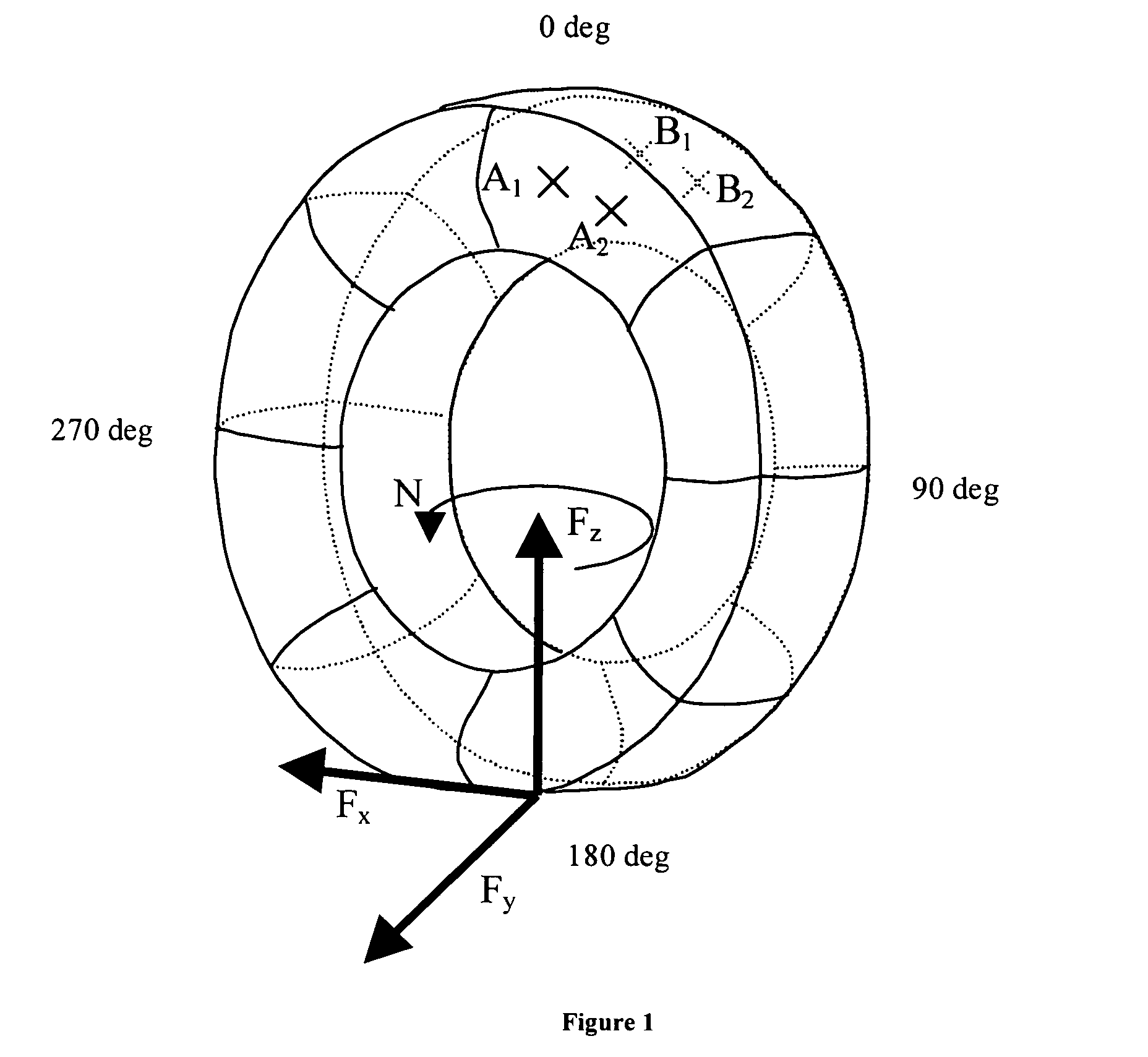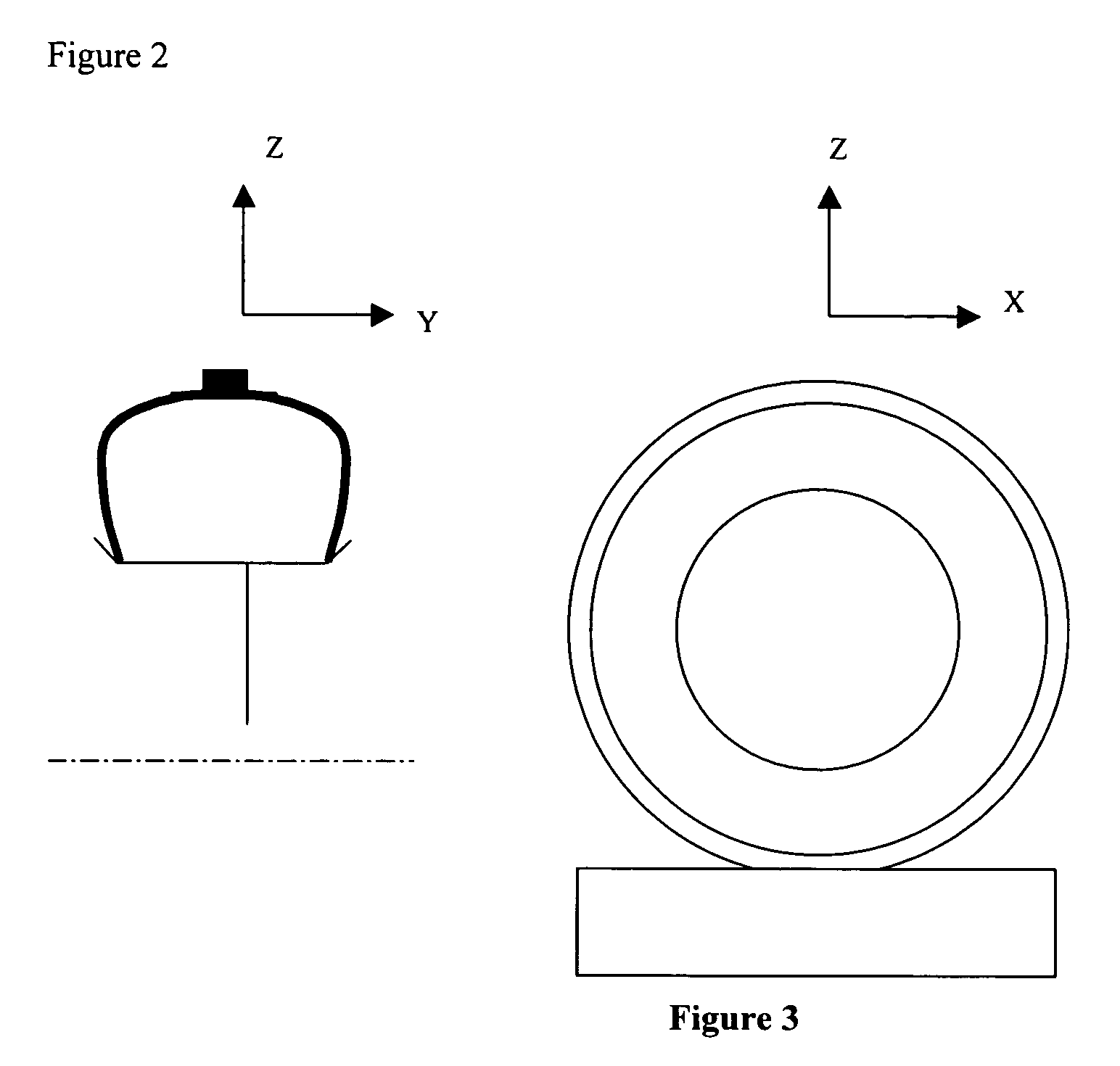Estimating maximum friction coefficient based on knowledge of the loads and self-alignment torque generated in a tire contact zone
a technology of load and friction coefficient, applied in vehicle tyre testing, brake systems, instruments, etc., can solve the problems of tire deformation modification, high sensitive to road surface condition, etc., and achieve the effect of increasing the dynamic range of signal variation
- Summary
- Abstract
- Description
- Claims
- Application Information
AI Technical Summary
Benefits of technology
Problems solved by technology
Method used
Image
Examples
Embodiment Construction
[0066]The method described here relies on the fact that each force applied to the tire in the contact area causes a modification of the circumferential extension of the sidewalls of the tire. The case of an inflated tire fitted on its wheel will be considered, on whose first sidewall two points A1 and A2 are identified (FIG. 1), which are placed at the same radius but are separated in the circumferential direction. On the second sidewall, at the same azimuths as A1 and A2 and at the same radius, two points B1 and B2 are selected. In the absence of any forces being applied to the tire, the distance which separates the two points is constant as a function of the angle of rotation of the tire-wheel assembly. The azimuth θ will be defined as the angle at which the circumferential extension of the sidewalls is being analyzed. The origin of the azimuth is taken on the side opposite to the center of the contact area. The center of the contact area therefore has the azimuth 180°.
[0067]When ...
PUM
 Login to View More
Login to View More Abstract
Description
Claims
Application Information
 Login to View More
Login to View More - R&D
- Intellectual Property
- Life Sciences
- Materials
- Tech Scout
- Unparalleled Data Quality
- Higher Quality Content
- 60% Fewer Hallucinations
Browse by: Latest US Patents, China's latest patents, Technical Efficacy Thesaurus, Application Domain, Technology Topic, Popular Technical Reports.
© 2025 PatSnap. All rights reserved.Legal|Privacy policy|Modern Slavery Act Transparency Statement|Sitemap|About US| Contact US: help@patsnap.com



